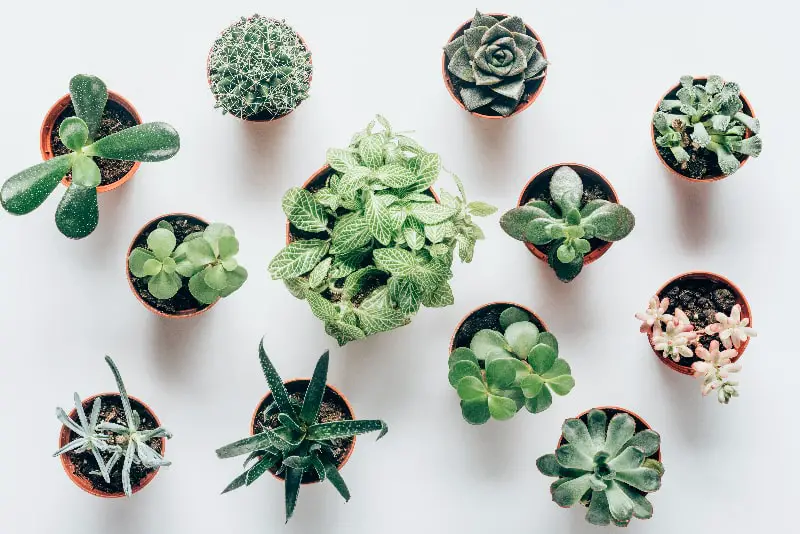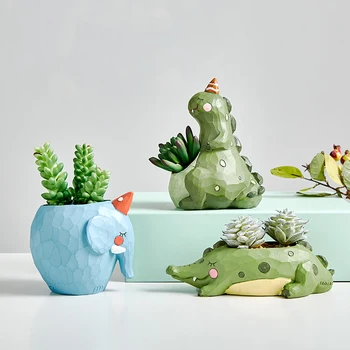Looking to perk up your exterior or add a bit of life to your interior? You have to do some long hours of thinking, researching, and planning to find that perfect plant for the job. But that’s not the end of it. You also have to find the perfect container for your new plant.
But what options do you have? First, you have to consider the important thing here: choosing the right planter materials.
To help you with that, we have developed this comprehensive guide. So, continue reading to find all about the planter material options that you can explore.
Here are the 8 best planter materials you can consider for your indoor plant.
Terracotta and ceramic materials are the best because they are breathable, which encourages proper water drainage and air circulation. There is a slight difference between terracotta and ceramic planter materials. Terracotta is the name given to a special kind of clay. It comes with different traits of its own. Ceramic is just clay with a lighter color than terracotta.
For instance, traditional terracotta is reddish-brown with a rustic look. Terracotta is not glazed on the outside, so unglazed terracotta pots look more rustic and are suitable for plants that prefer more drainage.
With glazed ceramic planter pots, you can keep your plant hydrated for a longer period, as they prevent leakage. Ceramic planters have similar advantages and disadvantages as terracotta planters.
Resin planters are durable and extremely lightweight, so right from the word go, they have an advantage over ceramic or terracotta planters. You can use resin planters both indoors and outdoors.
They also don’t need much maintenance and care if you compare them with ceramic or terracotta. Resin originates from polyethene (high-density). Therefore, it has that plasticky feel.
This material is among the newest for pots and planters. For making fiberglass, manufacturers spin the glass into fibers. Mix it with resin resulting in a flexible yet strong composite. This mixture is then put into different molds to create pots and planters. You can drill drainage holes into them if you want.
Manufacturing concrete planters require mixing cement with water, rock, and sand to create a mixture and form the final product. The mixture also contains aluminum, silicon, iron, and calcium to assist in binding. The wet mixture is poured into a mold of any shape, and when it is dried up, it is colored with masonry paint.
Without a doubt, plastic is a wonderful material as it is durable and sturdy. These pots are made using crude oil (non-renewable). But princesses are available to process it for making these pots. There are all kinds of plastic available. For instance, uPVC is safe for growing food.
Different types of metal containers are available. But the most common ones for planting are copper, zinc, aluminum, and steel. These pots are prone to rust and corrode over the years if you place them outside.
As these pots are not porous, they ensure good drainage. You can drill holes to create better drainage and airflow.
These pots and planters are plastic-based chemicals. These include the likes of polyethylene and polyurethane. They can come in a range of different thickness levels. Polyurethane has more insulation, and you can keep the theme outside too.
These pots and containers are made with a variety of natural materials. The most common woods used are pine, fir, cedar, bamboo, hemlock, and rosewood.
Bamboo pots are extremely lightweight. After cutting the beams and planks from the trees, wood is cured, treated, and made waterproof to provide strength to the pot.

Terracotta and ceramic are a better choice because these porous materials allow air breathability. It is not the lightest but the organic clay material makes them an ideal choice for plant growth.
It all depends on the type of planter you are looking to make. You can go for wood planters, foam planters, metal planters, fiberglass planters, ceramic and terracotta partners, and resin planters. But if you are looking to make your own, go for concrete planters.
It depends on the type of planter box you are considering making. You will need the material and make four sides of the material.
For example, you will need wooden planks to make a wooden planter box or metal sheets to make a metal planter box. You will have to join them to make a bow. Make them sturdy to hold soil mix. You can drill holes at the bottom to ensure proper drainage.
There is a range of different materials that you can use for filling in your planters. You can go for recycled crushed cans, reuse packaging materials, natural materials, recycled plastics, new plastics, or recycled cardboard.
Planters are available in all shapes and sizes. You can choose the best one according to the needs of your plants. You also have to consider where you will place your plant. Make sure to choose the planter materials accordingly.
You may enjoy these related articles:




We provide a platform supported by gardening enthusiasts to share unique experience and knowledge.
We’ve pledged 5% of sales to the program which help more families have opportunity to have garden.
Every action we make has an impact on planet. Learn more about Million Compost Movement.
Join facebook community to connect, share passion and get support when you need.
Keep in mind that we may receive commissions when you click our links and make purchases. However, this does not impact our reviews and comparions. We try our best to keep things fair and balanced, in order to help you make the best choice for you.
As an Amazon Associate, we earn from qualifying purchases.
Sign up for gardening tips, activism awareness, exclusive offers and more!
© Garden Guidepost

Gardening tips, activism awareness, exclusive offers and more!